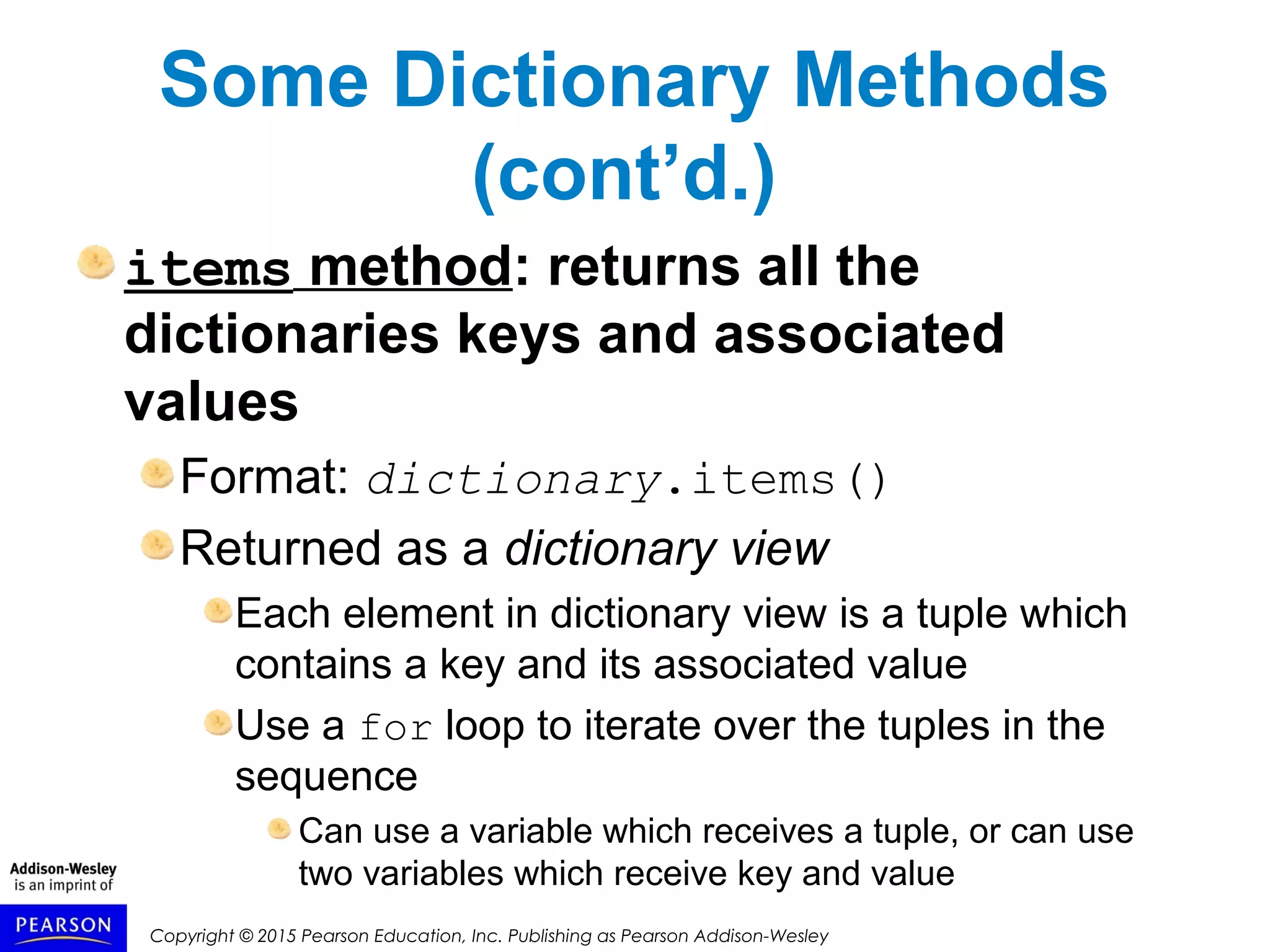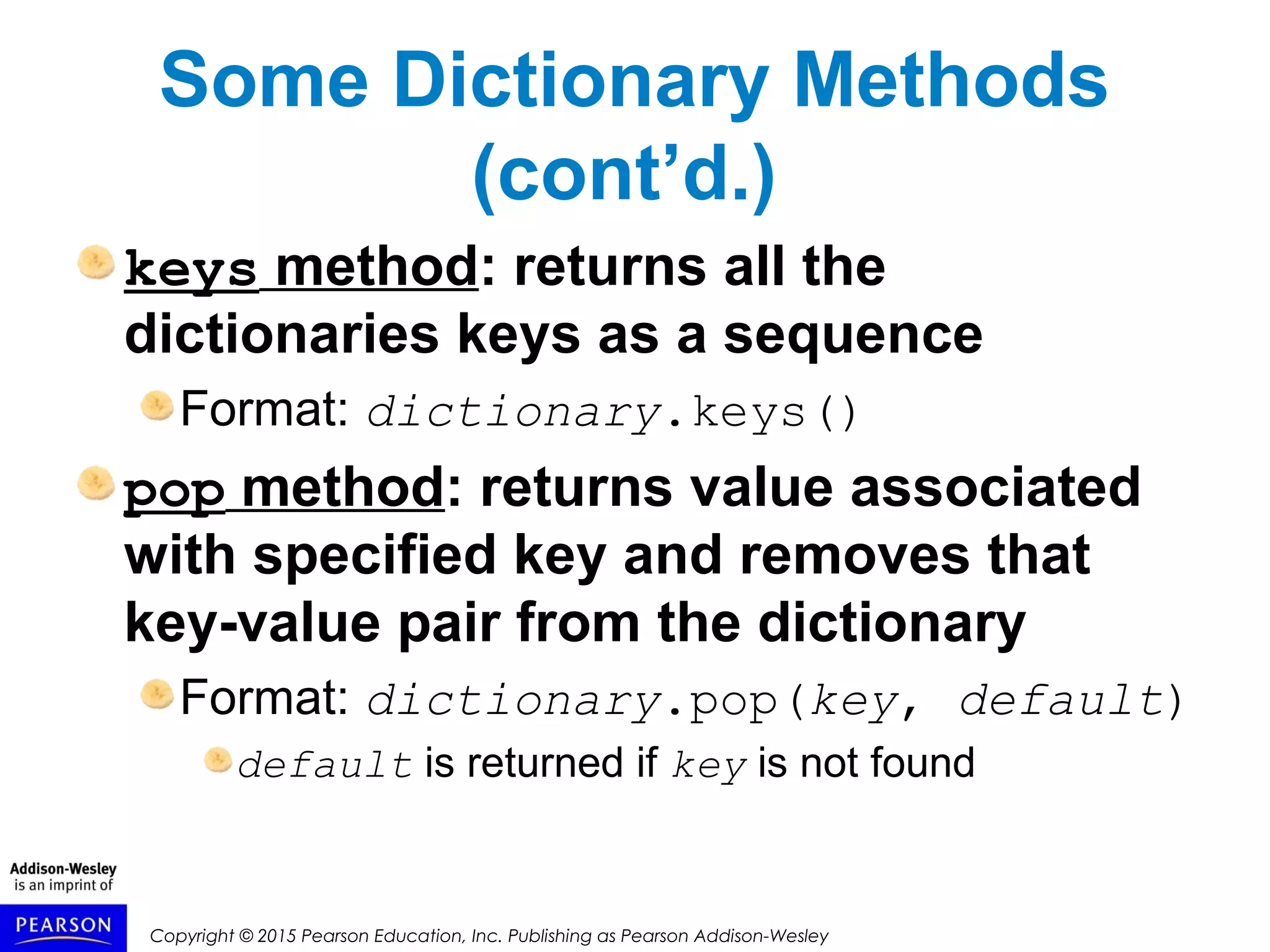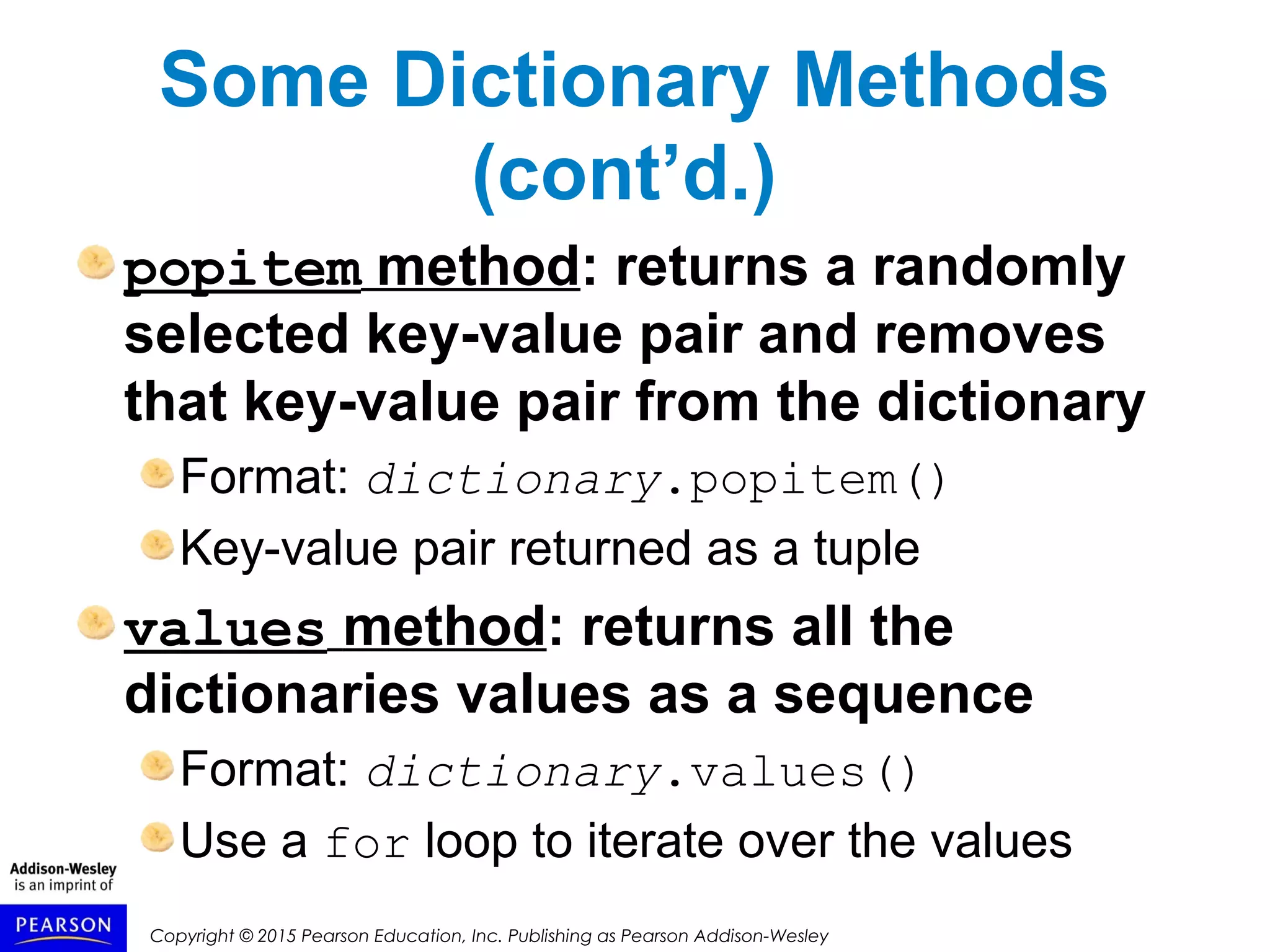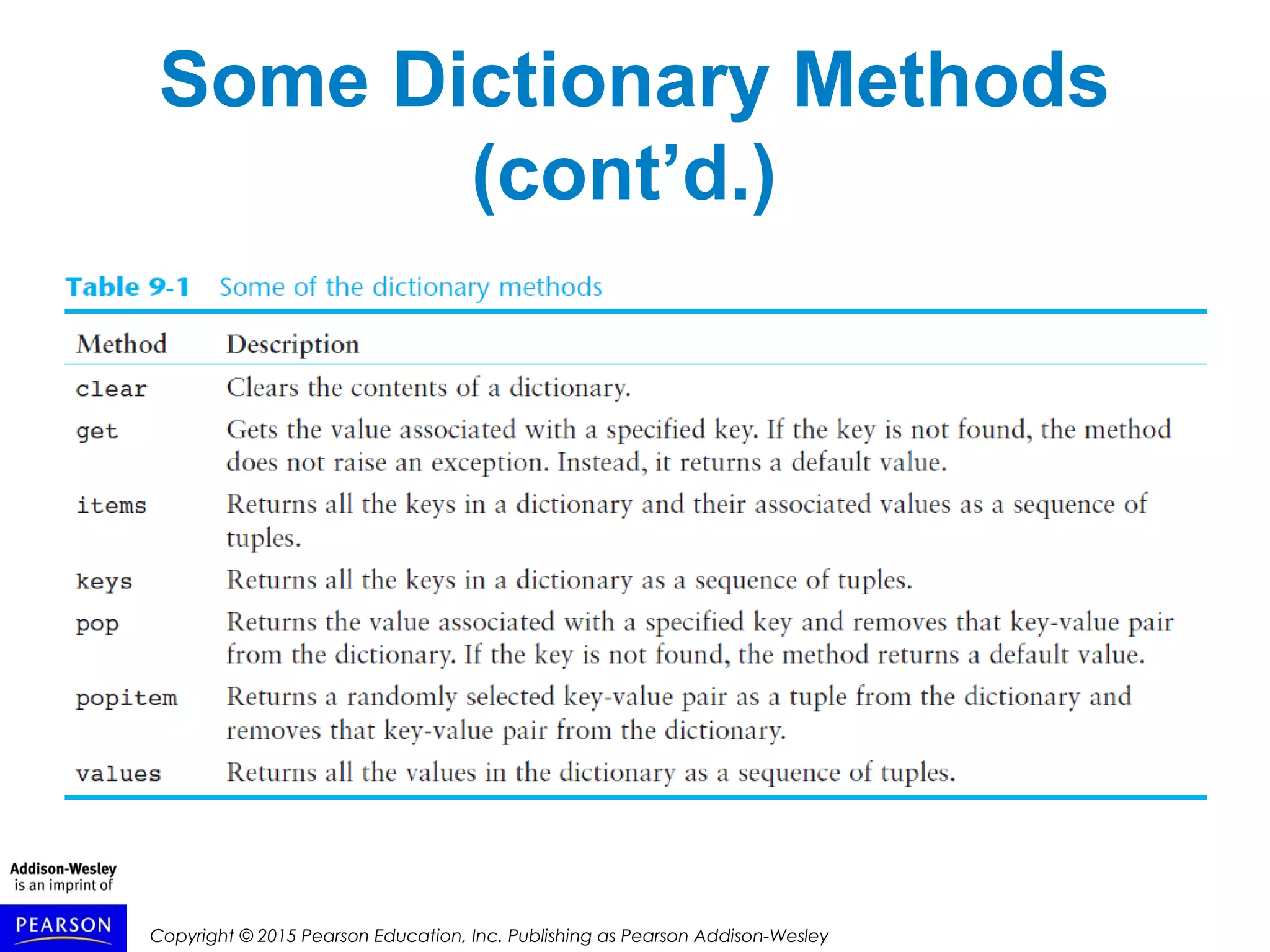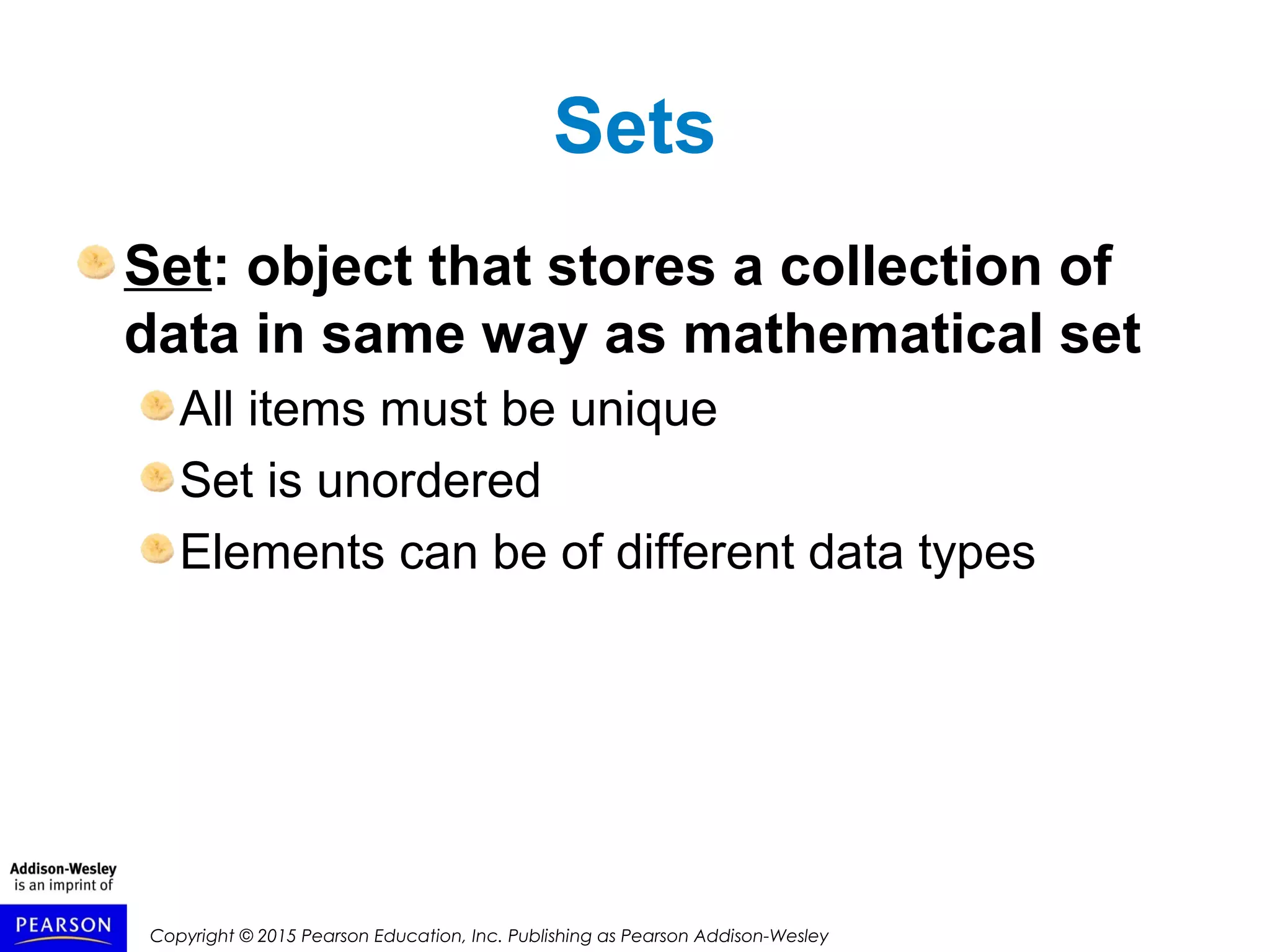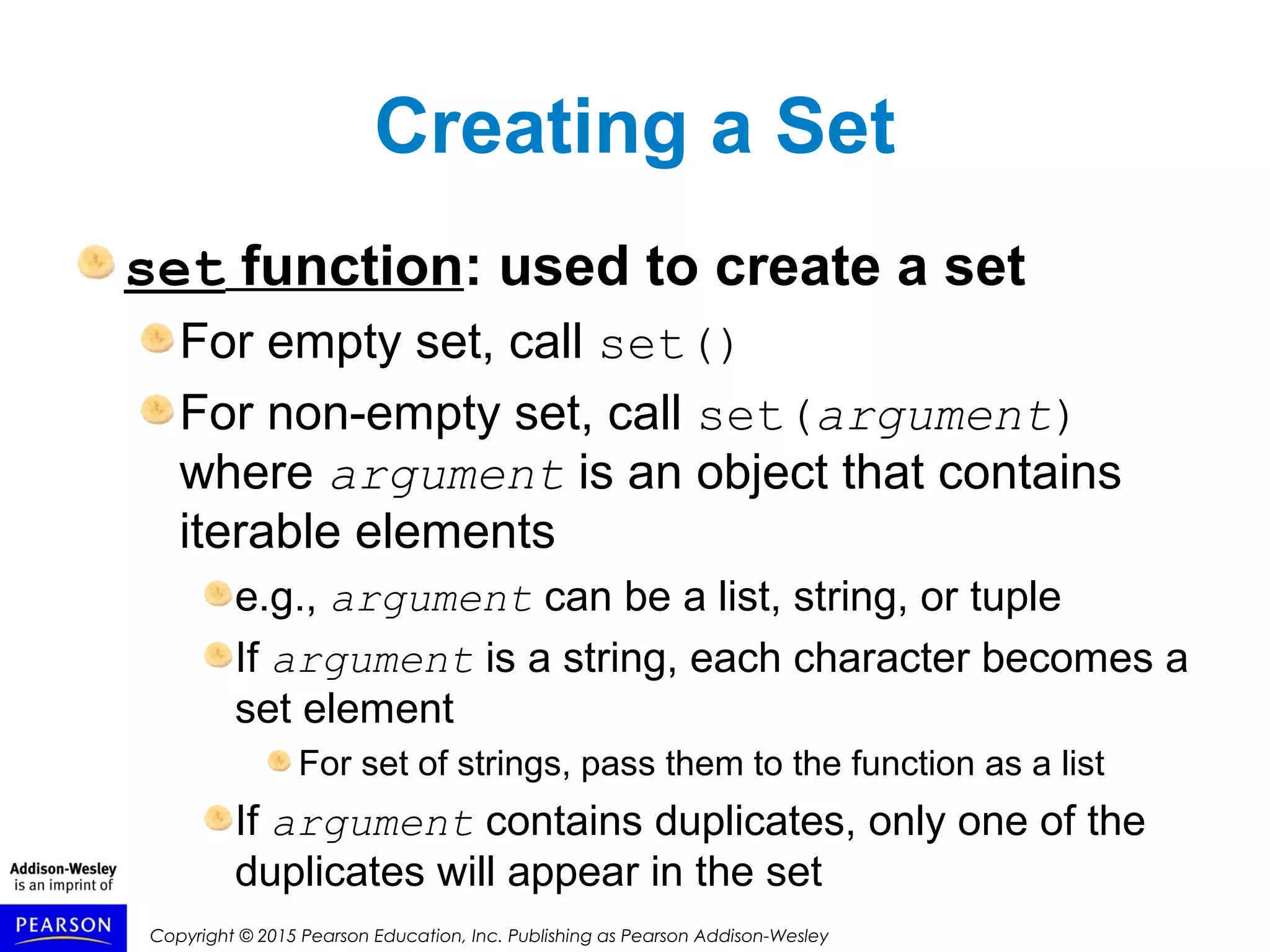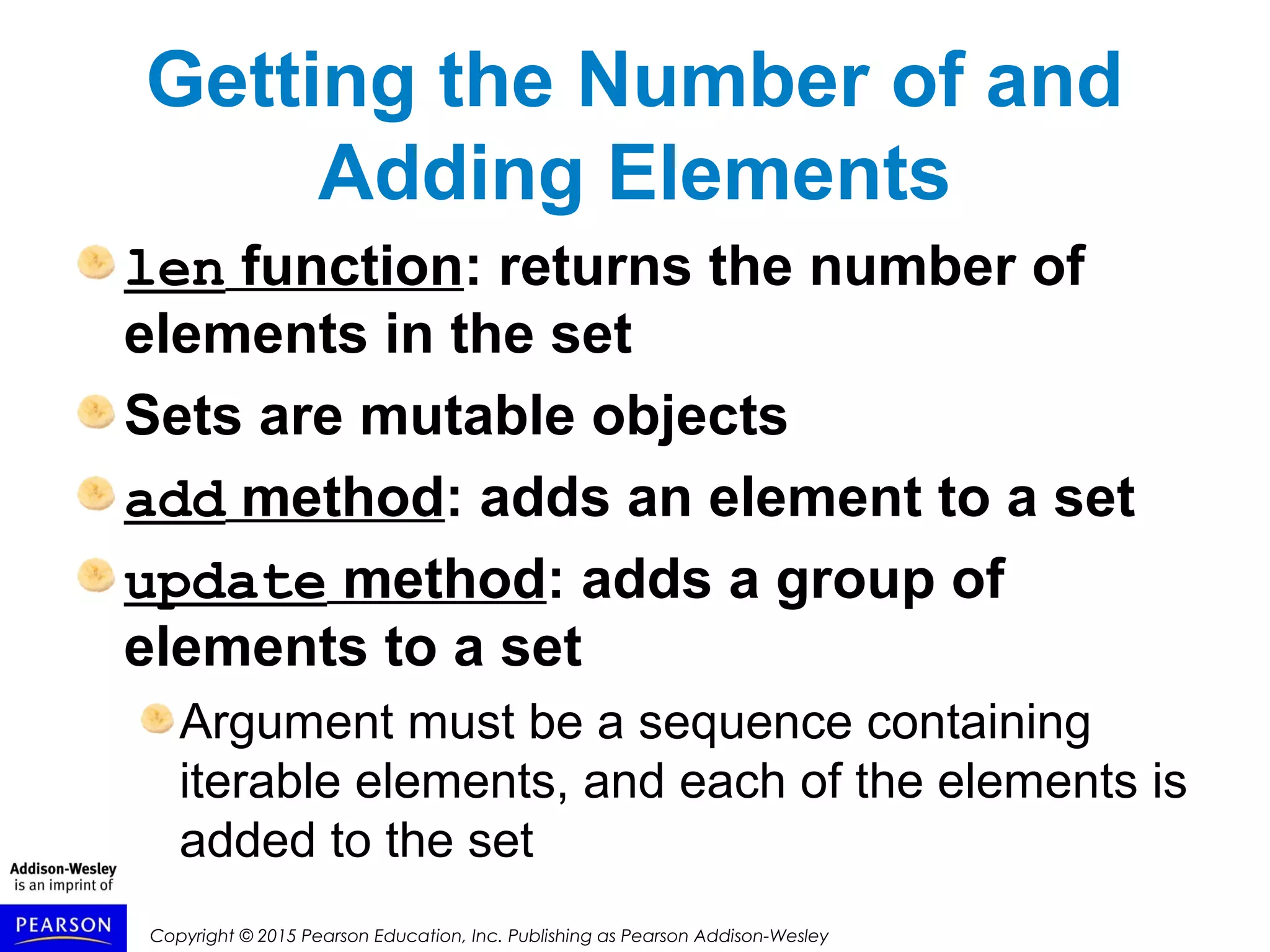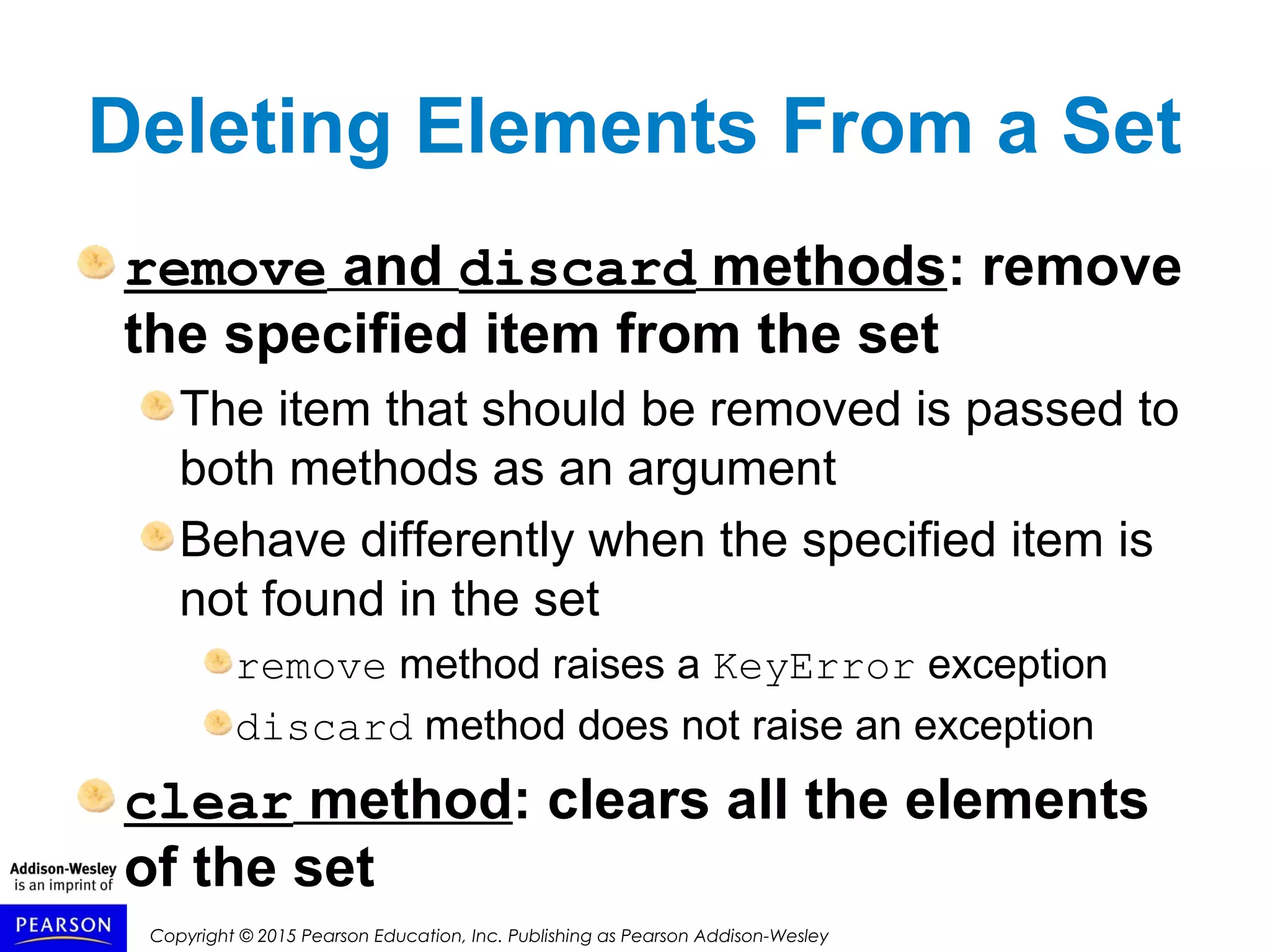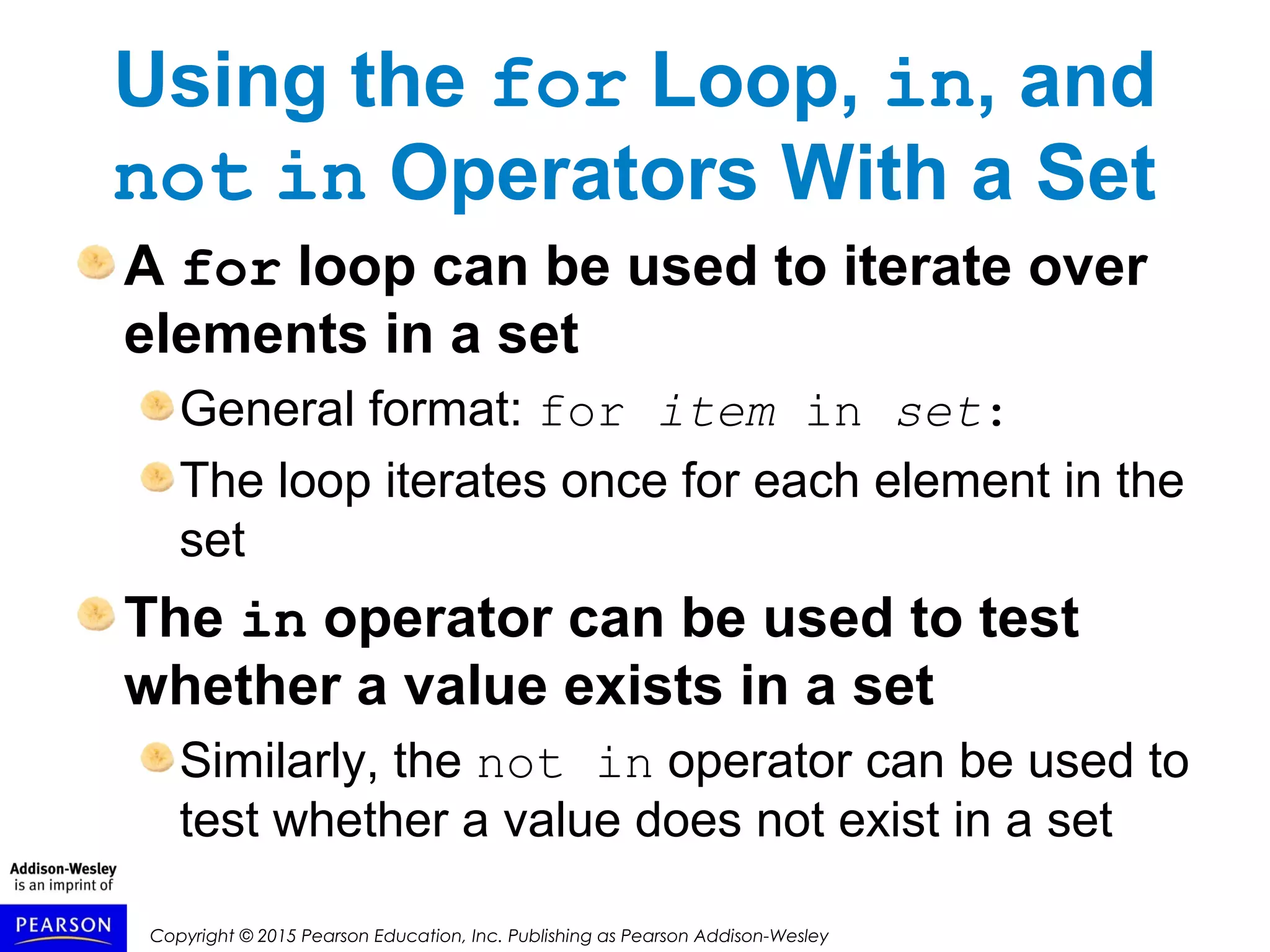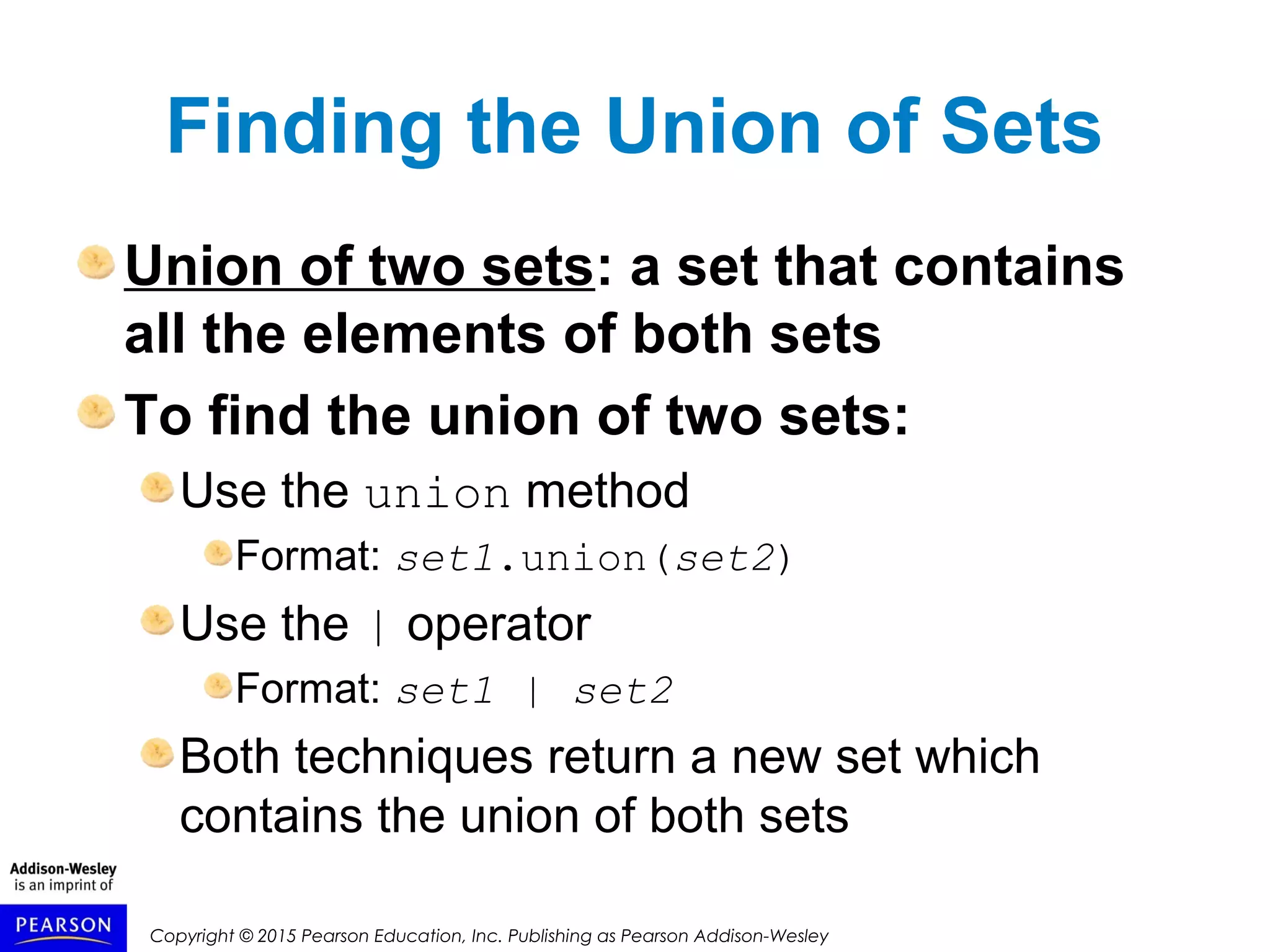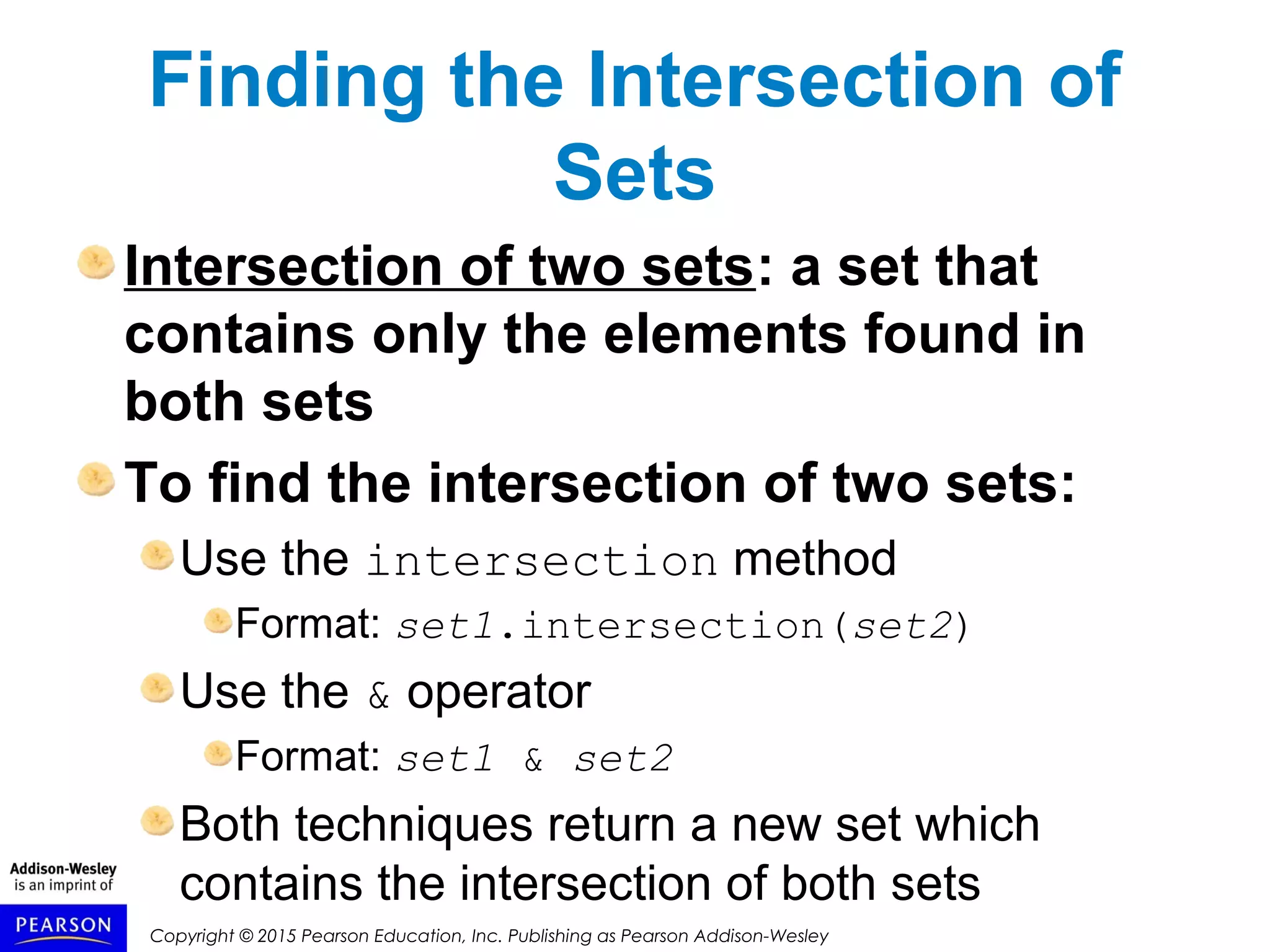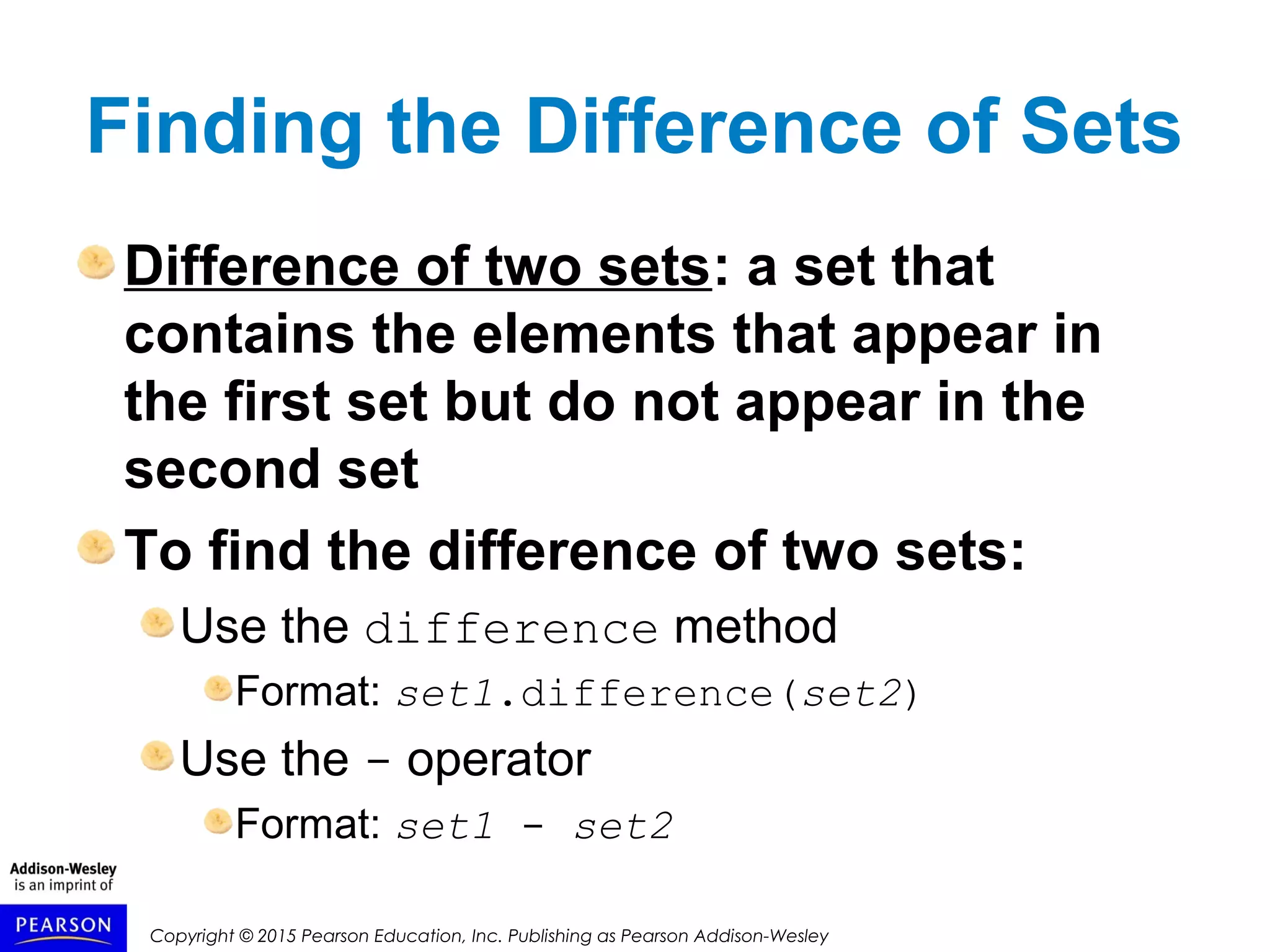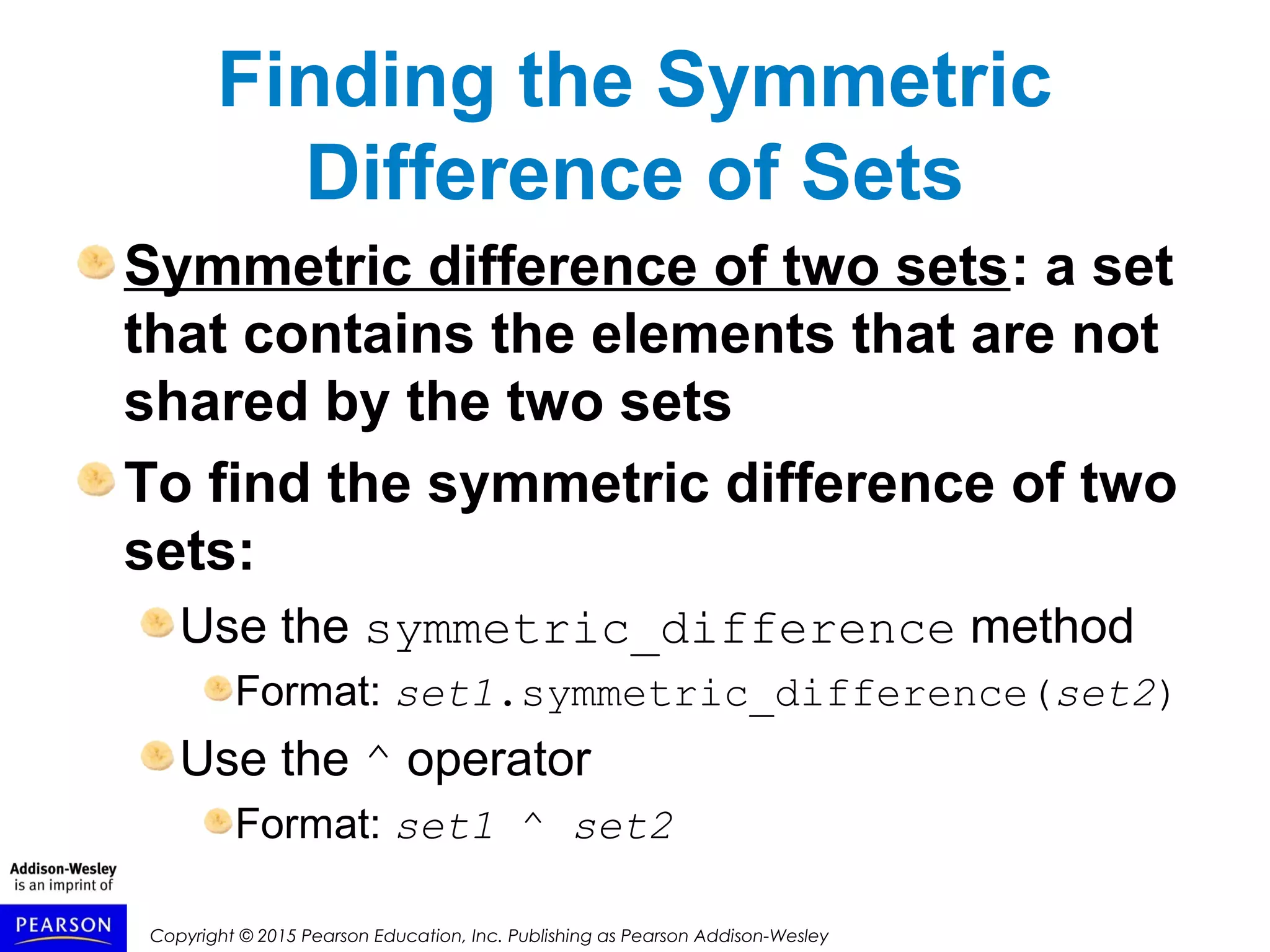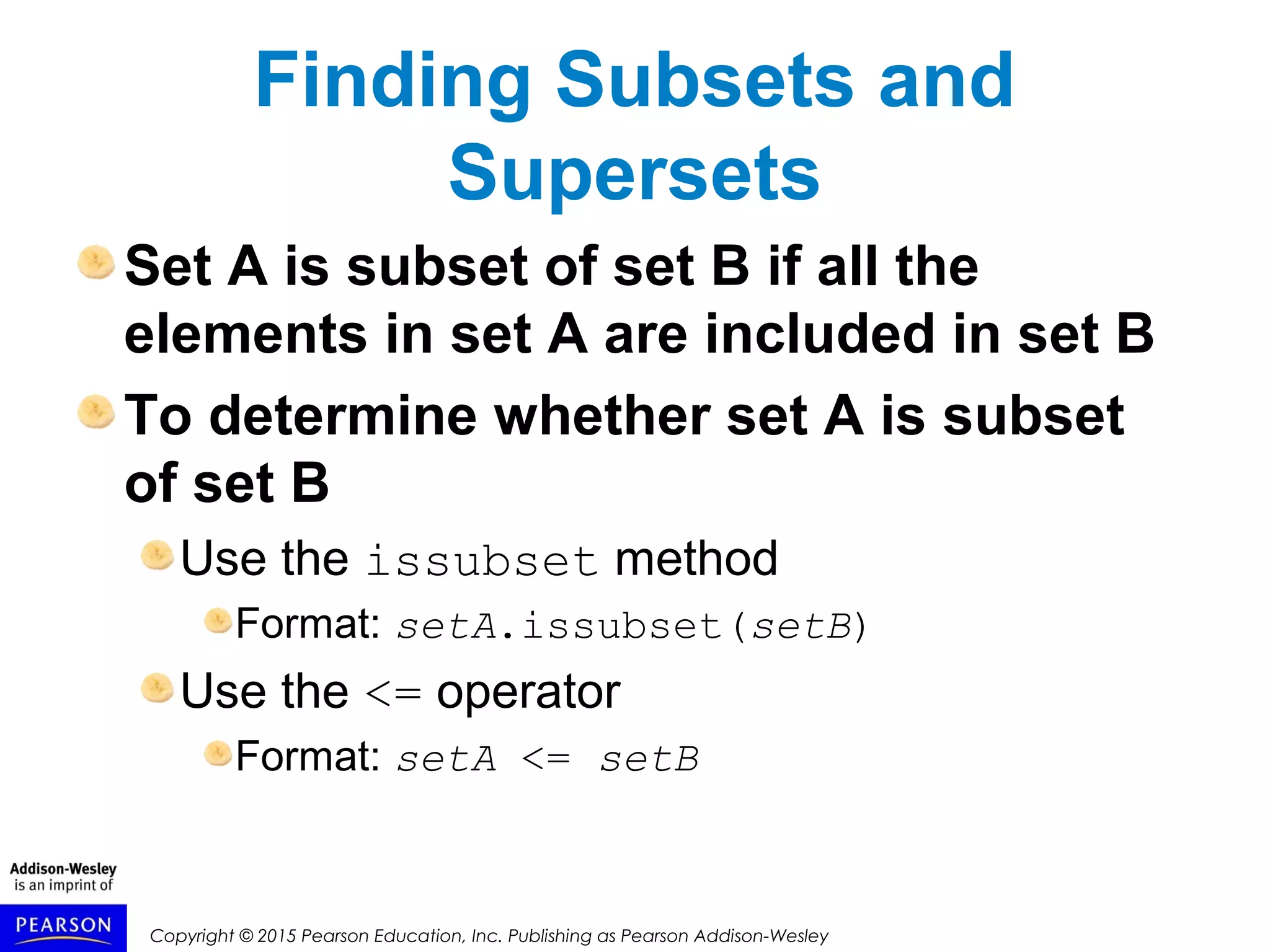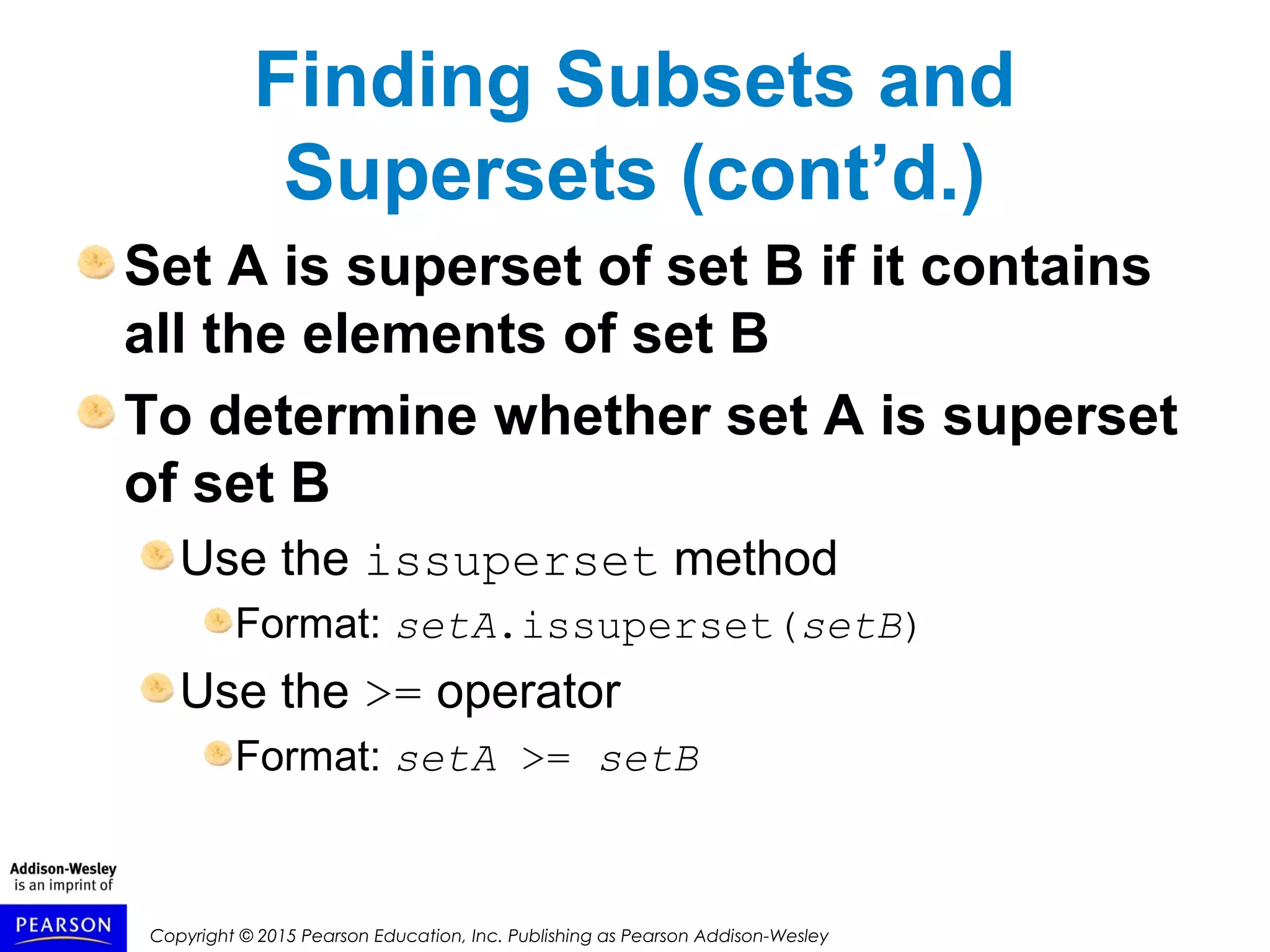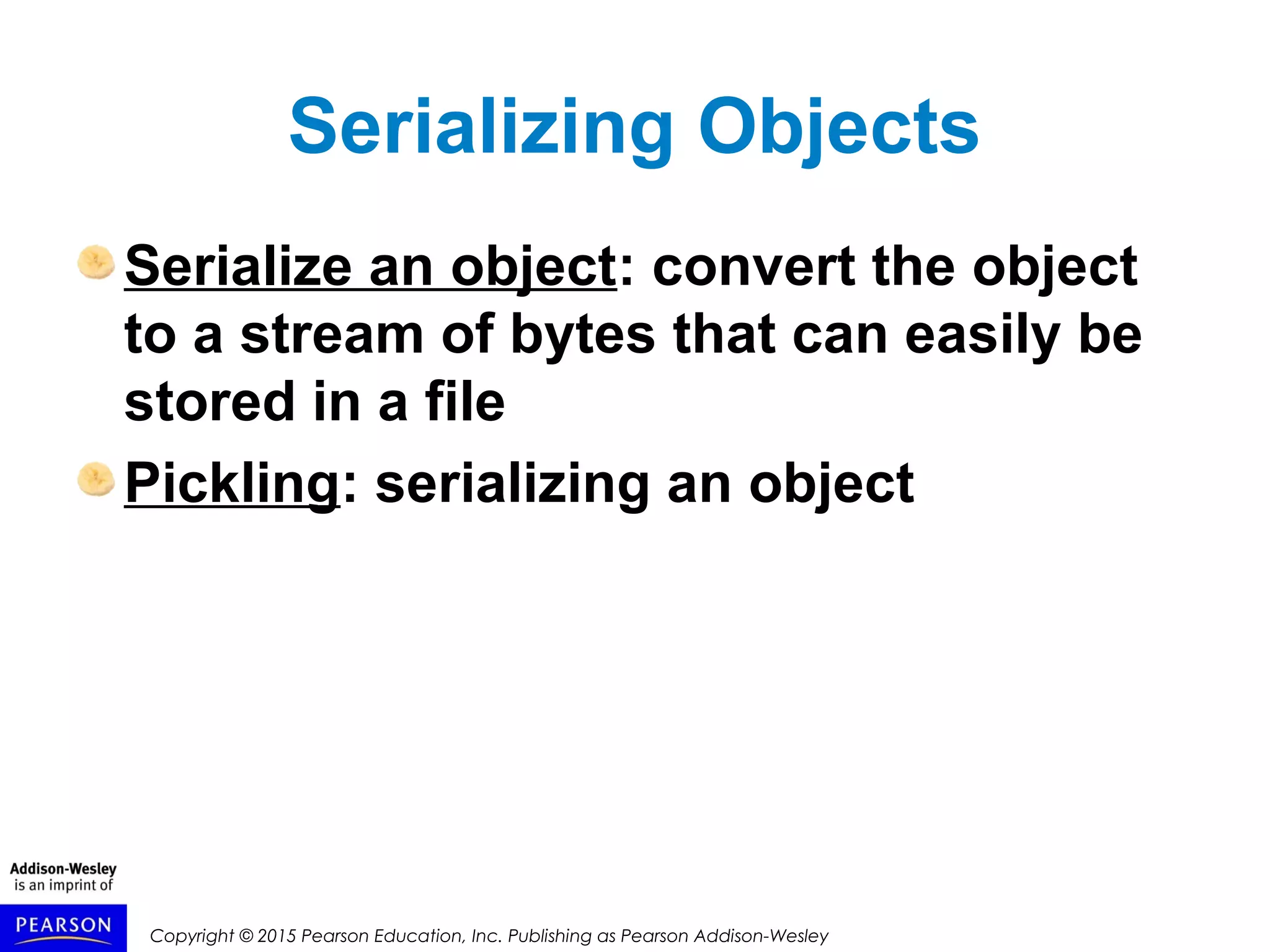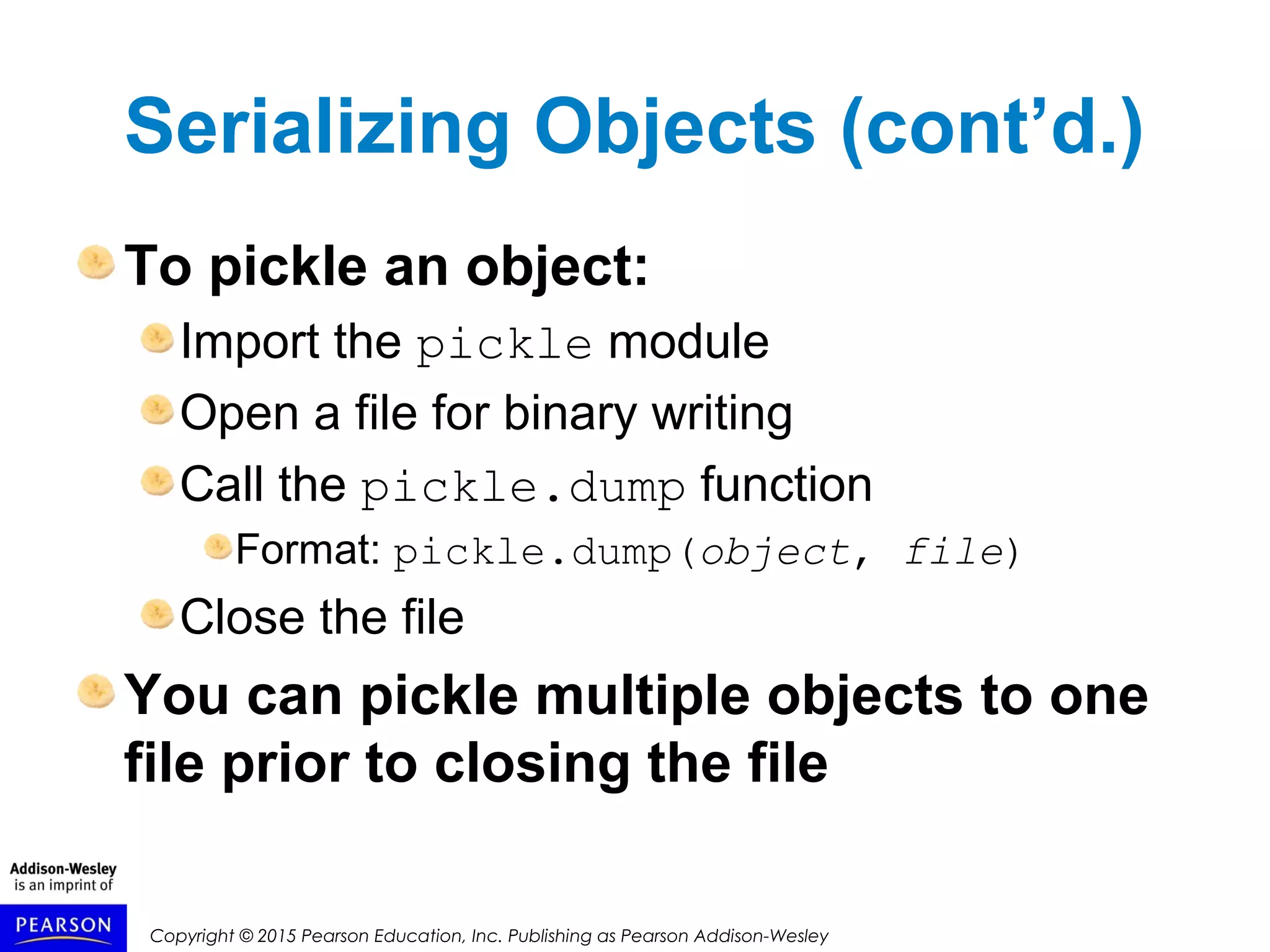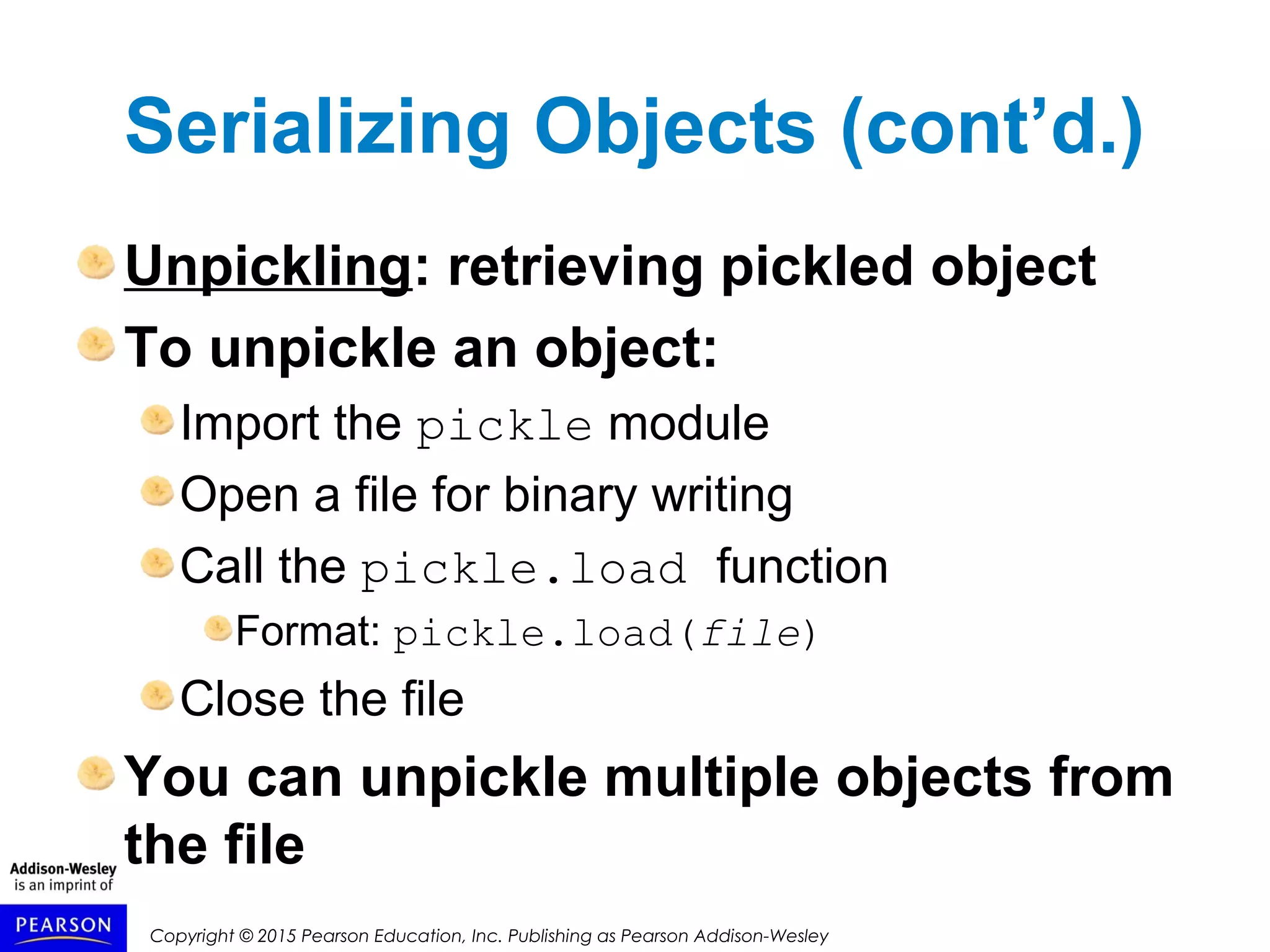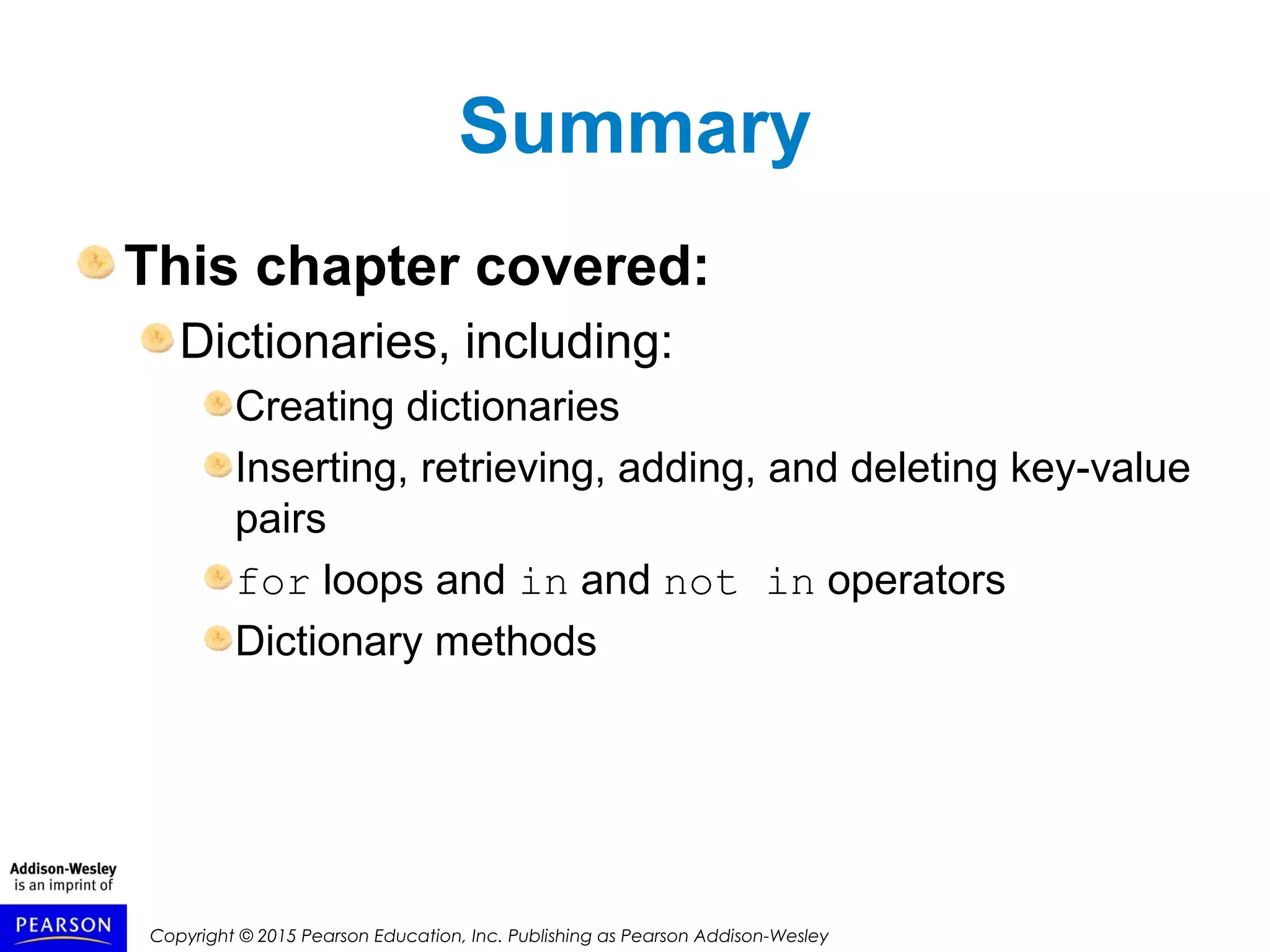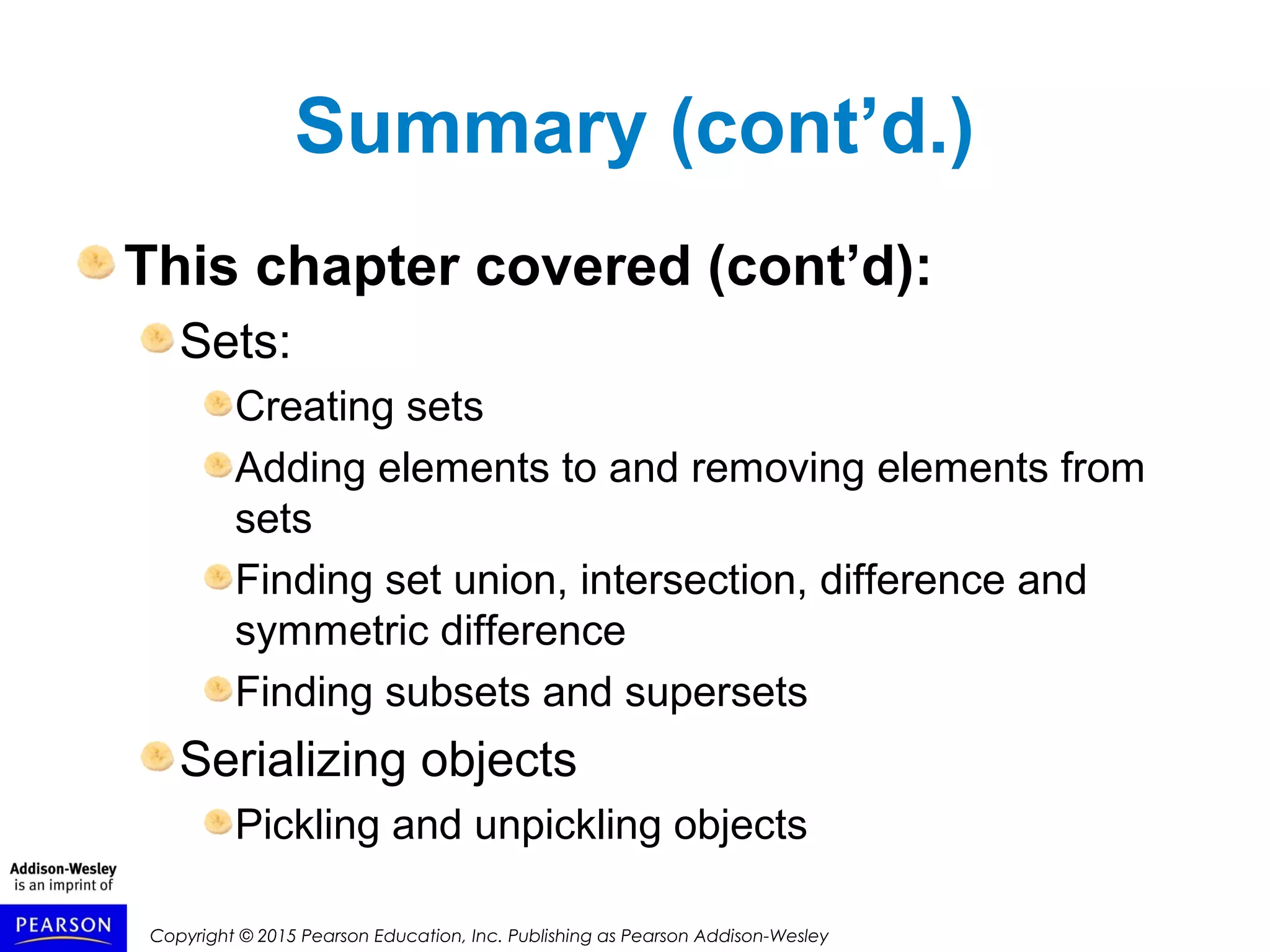This chapter discusses dictionaries and sets in Python. It covers how to create, manipulate, and iterate over dictionaries and sets. Some key dictionary topics include adding and retrieving key-value pairs, checking for keys, and using dictionary methods. For sets, the chapter discusses set operations like union, intersection, difference and symmetric difference. It also covers serializing objects using the pickle module.
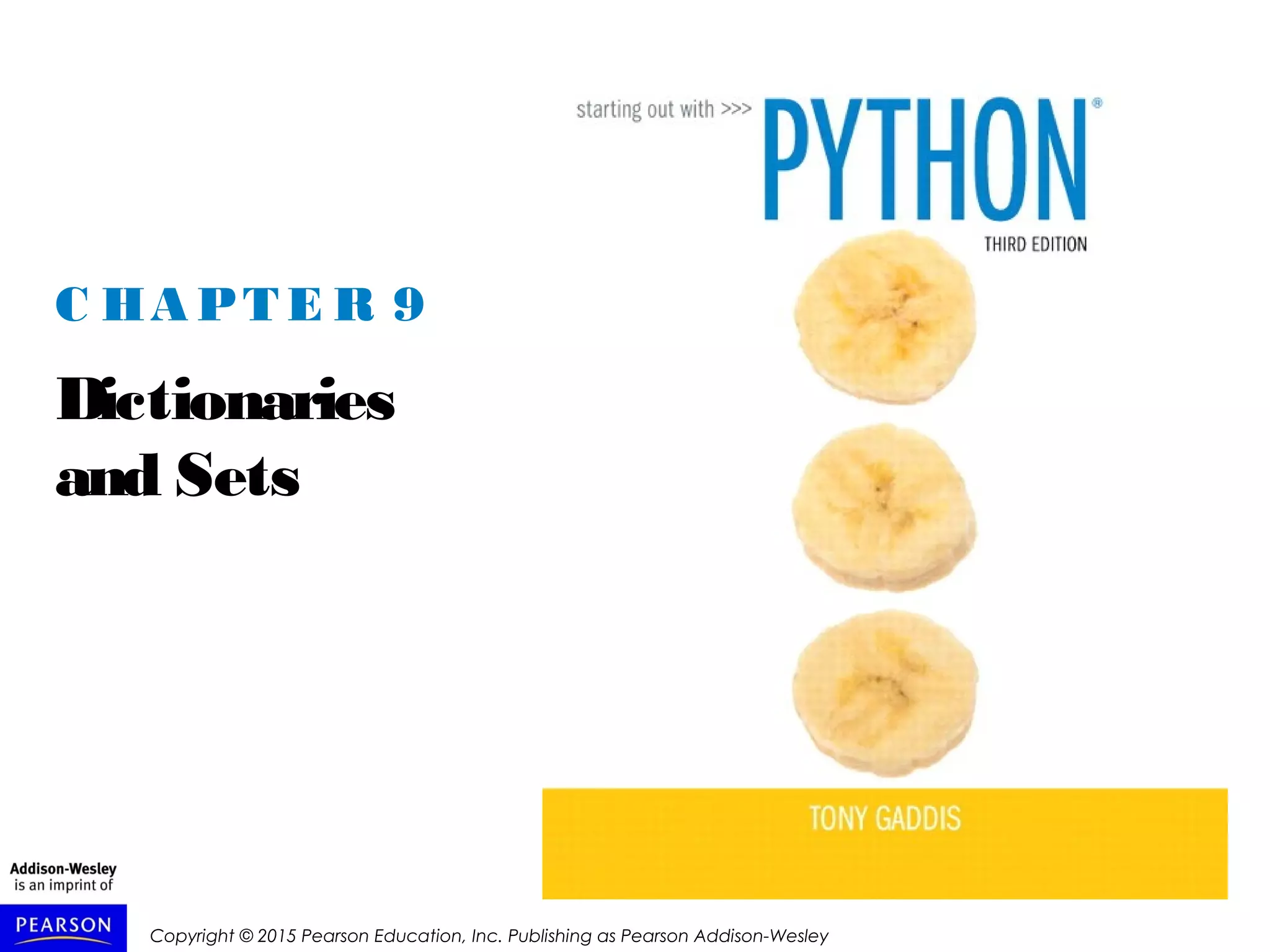

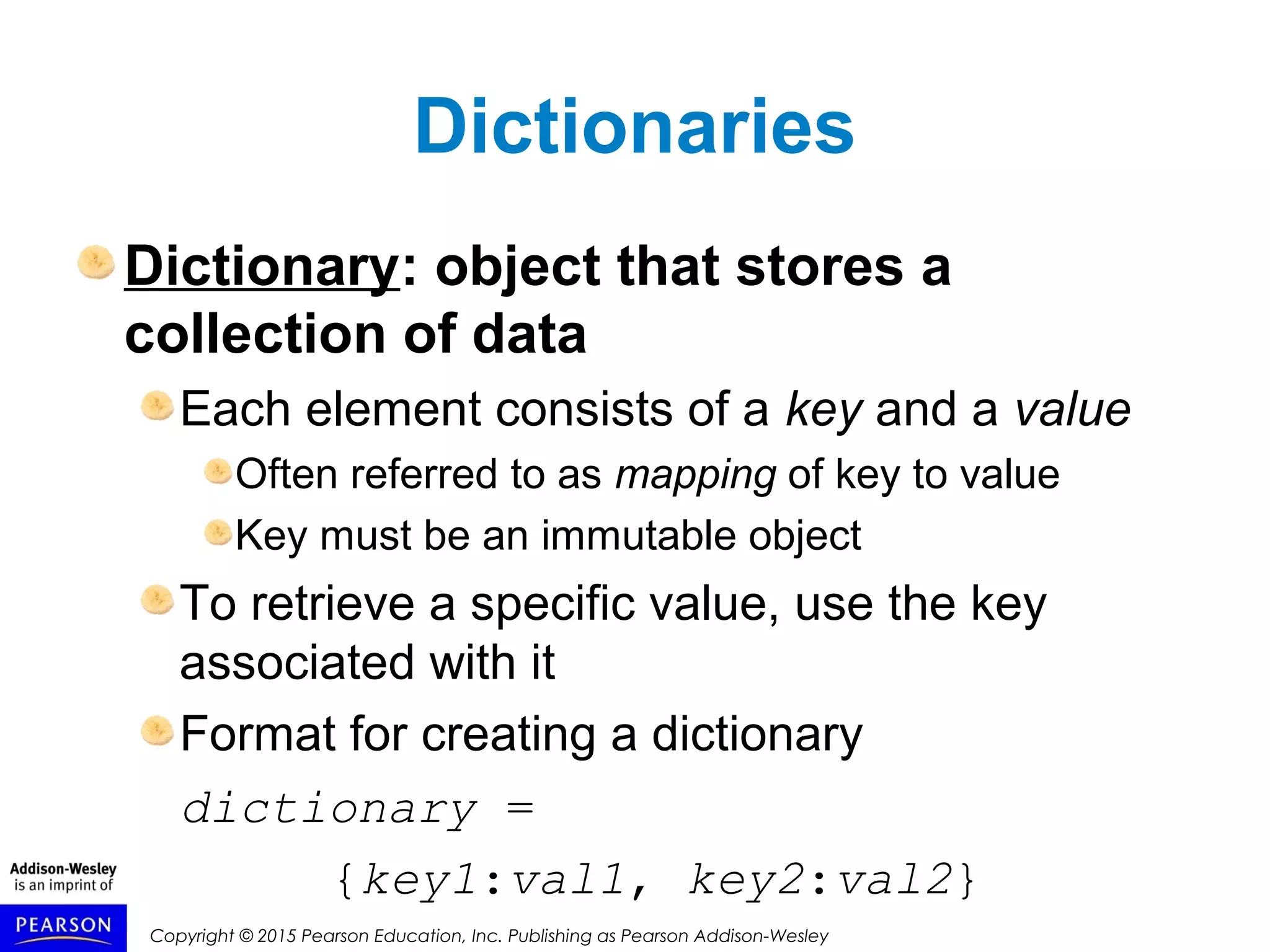
![Copyright © 2015 Pearson Education, Inc. Publishing as Pearson Addison-Wesley
Retrieving a Value from a
Dictionary
Elements in dictionary are unsorted
General format for retrieving value from
dictionary: dictionary[key]
If key in the dictionary, associated value is
returned, otherwise, KeyError exception is
raised
Test whether a key is in a dictionary
using the in and not in operators
Helps prevent KeyError exceptions](https://image.slidesharecdn.com/gaddispython3echapter09ppt-170320012831/75/Python-Dictionaries-and-Sets-4-2048.jpg)
![Copyright © 2015 Pearson Education, Inc. Publishing as Pearson Addison-Wesley
Adding Elements to an
Existing Dictionary
Dictionaries are mutable objects
To add a new key-value pair:
dictionary[key] = value
If key exists in the dictionary, the value
associated with it will be changed](https://image.slidesharecdn.com/gaddispython3echapter09ppt-170320012831/75/Python-Dictionaries-and-Sets-5-2048.jpg)
![Copyright © 2015 Pearson Education, Inc. Publishing as Pearson Addison-Wesley
Deleting Elements From an
Existing Dictionary
To delete a key-value pair:
del dictionary[key]
If key is not in the dictionary, KeyError
exception is raised](https://image.slidesharecdn.com/gaddispython3echapter09ppt-170320012831/75/Python-Dictionaries-and-Sets-6-2048.jpg)
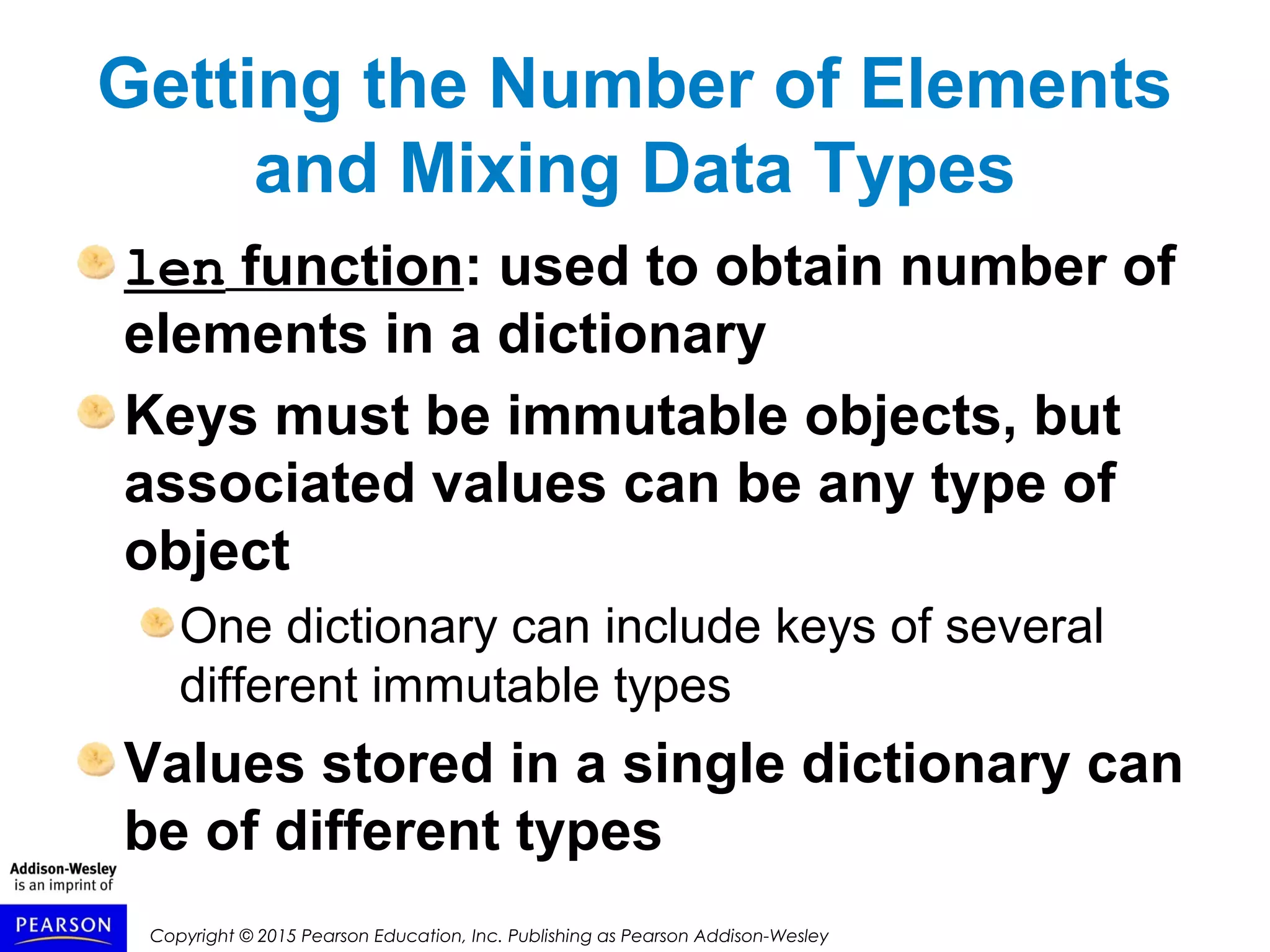
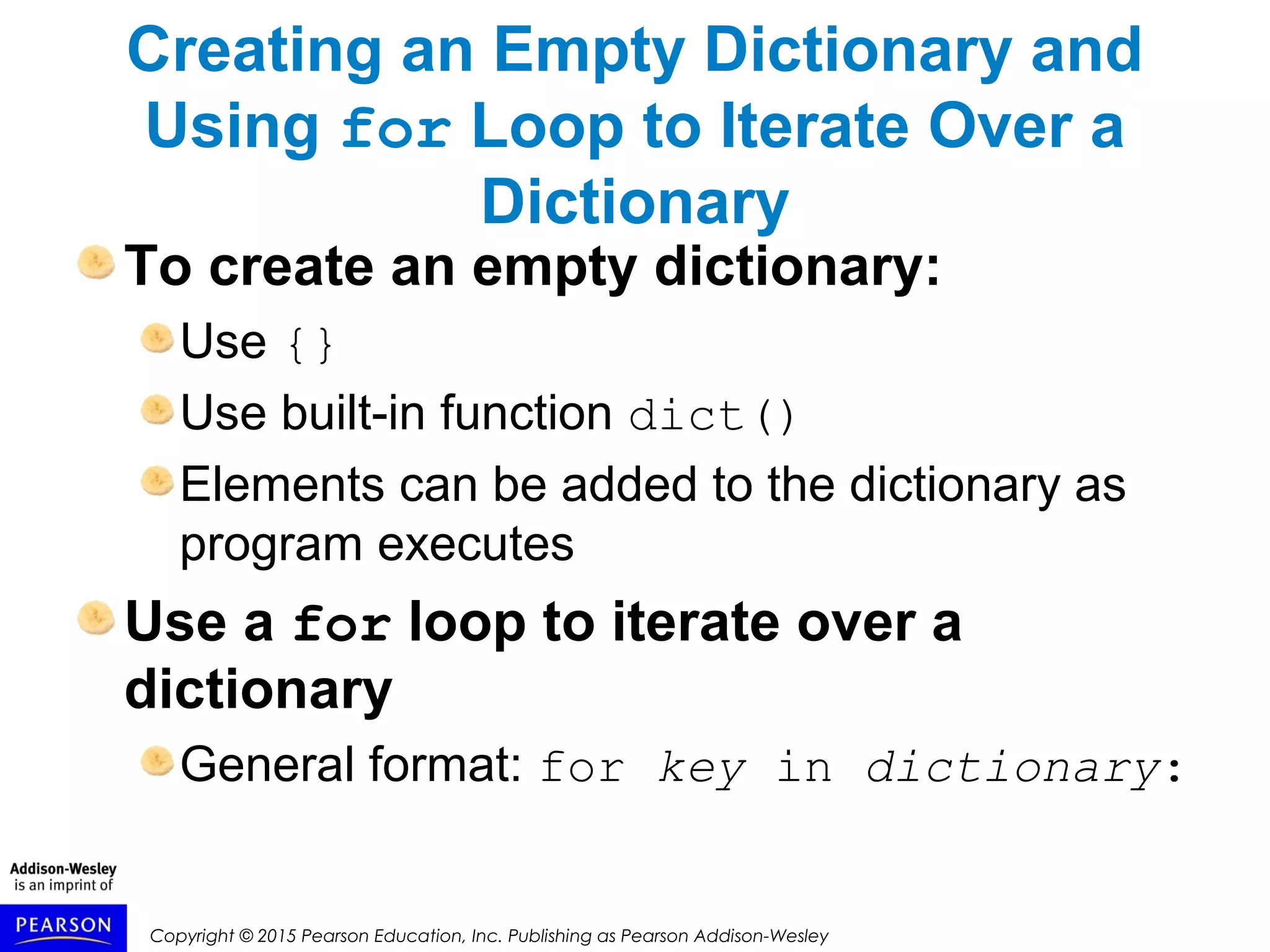
![Copyright © 2015 Pearson Education, Inc. Publishing as Pearson Addison-Wesley
Some Dictionary Methods
clear method: deletes all the elements
in a dictionary, leaving it empty
Format: dictionary.clear()
get method: gets a value associated
with specified key from the dictionary
Format: dictionary.get(key, default)
default is returned if key is not found
Alternative to [] operator
Cannot raise KeyError exception](https://image.slidesharecdn.com/gaddispython3echapter09ppt-170320012831/75/Python-Dictionaries-and-Sets-9-2048.jpg)
